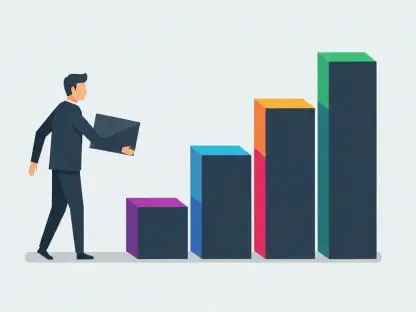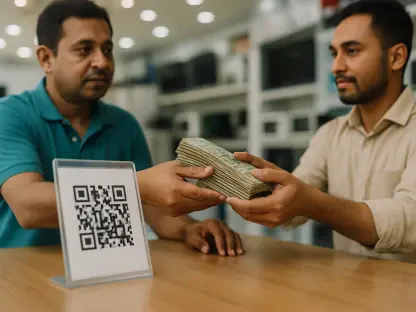The global payment processing solution market is set on a remarkable upward trajectory, driven by the increasing demand for secure and efficient digital transactions across various sectors. As businesses and consumers continue to embrace digital payment methods, the market is projected to expand significantly over the next decade, reaching a valuation of $236.6 billion by 2033. This astronomical growth can be attributed to several factors, including advancements in payment technologies, the rise of e-commerce, and efforts to enhance financial inclusion worldwide. Let’s delve into the various aspects fueling this expansion and the emerging trends that will shape the future of payment processing.
Market Growth and Projection
According to the Market.us Report, the payment processing solution market is set to experience substantial growth over the next decade. The market is expected to surge from USD 79.9 billion in 2023 to approximately USD 236.6 billion by 2033, representing an impressive compound annual growth rate (CAGR) of 11.5% from 2024 to 2033. This robust growth underscores the increasing necessity for seamless, secure, and efficient payment processing solutions in a digitized economy.
Several factors significantly contribute to this growth. One of the primary drivers is the rising prevalence of digital transactions among both businesses and consumers. Advanced payment technologies, such as mobile payments, contactless cards, and blockchain solutions, are becoming more commonplace, facilitating smoother and more secure transactions. Additionally, the continuous expansion of e-commerce demands robust payment processing systems, further underpinning this market growth. As online shopping becomes increasingly popular, the need for efficient, secure, and reliable payment solutions becomes crucial.
Driving Factors
One of the primary driving factors behind the market’s growth is the increasing adoption of digital transactions. Businesses and consumers are progressively shifting towards digital payment methods, which boosts the demand for advanced payment technologies. Mobile payments, contactless cards, and blockchain solutions are gaining widespread acceptance, offering enhanced security and convenience. These technologies streamline transactions and provide a superior user experience, further propelling market growth.
The e-commerce sector’s explosive growth is another critical factor driving the demand for payment processing solutions. As more people opt for online shopping, the need for efficient and secure payment systems becomes paramount. E-commerce platforms require robust payment solutions to handle high transaction volumes and ensure a seamless customer experience. Moreover, initiatives aimed at integrating underbanked and unbanked populations into the global financial system also drive the adoption of payment processing solutions. Such efforts promote financial inclusion, enabling more people to participate in the digital economy and fueling market expansion.
Regional Insights
North America has emerged as a dominant player in the payment processing solution market, maintaining a leading position through 2023. In that year, the region captured over 43.2% of the total market share, equating to a revenue of USD 34.5 billion. Several factors contribute to North America’s dominance, including its robust e-commerce sector, favorable regulatory environments, and continued fintech innovations. The region’s mature digital infrastructure and high consumer adoption rates for digital transactions further support its market leadership.
The U.S. market, in particular, has shown impressive growth. In 2023, the total transaction volume in the U.S. surpassed $10 trillion, encompassing credit and debit card transactions alongside ACH payments. Digital and e-commerce transactions alone accounted for an estimated $2 trillion of this volume. By 2025, global transaction volume from Payment Facilitators (PayFacs) such as Square, Stripe, and Shopify Payments is expected to exceed $4 trillion. This projection underscores the significant contribution of the U.S. market to the overall growth of the payment processing solution industry, demonstrating its substantial role in driving market trends and innovations.
Types of Payment Processing Solutions
The payment processing solution market comprises various types of solutions, each catering to different needs and preferences. Traditional payment processors, such as First Data and PayPal, facilitate transactions with robust security features and compliance with PCI standards. These solutions are widely adopted by businesses of all sizes, offering reliable and secure payment processing services that ensure the protection of sensitive financial information.
Mobile payment solutions, including platforms like Apple Pay, Google Pay, and Samsung Pay, have gained popularity due to their convenience and speed. These platforms enable transactions via mobile devices, allowing consumers to make quick and secure payments with minimal effort. Bank payment solutions, such as GoCardless, offer lower transaction fees and faster processing times for direct bank payments, making them ideal for businesses with recurring billing needs. These solutions cater to different operational requirements and enhance the overall payment experience.
Integrated payment solutions, provided by companies such as Stripe and Adyen, offer platforms that incorporate payment processing with e-commerce systems. These solutions support multiple currencies and payment methods, making them suitable for businesses with a global customer base. Specialized payment solutions are designed to address industries with unique regulatory challenges, for instance, the cannabis retail industry. These industries often employ specialized solutions like cashless ATMs and compliant digital wallets, ensuring seamless and secure transactions while adhering to legal requirements.
Emerging Trends
The future of the payment processing solution market is being shaped by several emerging trends. Digital wallets are quickly gaining traction, offering consumers a seamless and convenient payment experience. As we approach 2025, digital wallets are becoming the preferred method for many users, enabling quick and secure transactions without needing physical cards. This shift highlights the growing importance of digital wallets in the payment processing landscape.
Artificial intelligence (AI) is playing a significant role in enhancing payment processing solutions. AI is being utilized to improve fraud detection, personalize customer experiences, and streamline payment processes, thereby enhancing security and efficiency. Additionally, blockchain technology is revolutionizing the industry by offering transparency and security through its decentralized nature. Blockchain minimizes the need for intermediaries, reducing transaction costs and providing a more secure payment ecosystem.
The COVID-19 pandemic has accelerated the adoption of contactless payments. Consumers are increasingly showing a preference for tapping cards or smartphones to make purchases, prompting businesses to upgrade their point-of-sale systems to accommodate these transactions. This trend underscores the growing importance of contactless payment solutions in ensuring a safe and convenient payment experience, further driving growth in the payment processing market.
Opportunities
The surge in online shopping presents significant opportunities for businesses in the payment processing solution market. By offering efficient and secure online payment processing services that support various currencies and payment methods, companies can attract a broader customer base. The rise in mobile commerce also highlights the need for mobile-friendly payment solutions. Optimizing payment systems for mobile devices can enhance user experiences, capturing the growing segment of consumers who shop via smartphones and tablets.
Additionally, businesses can capitalize on emerging trends, such as digital wallets and AI, to enhance their payment processing solutions. By integrating advanced technologies, companies can offer more secure, efficient, and personalized payment experiences, gaining a competitive edge in the market. Embracing blockchain technology can also provide opportunities for reducing transaction costs and improving transparency and security. Companies that stay abreast of these trends and adapt their offerings accordingly are well-positioned to thrive in the evolving payment processing landscape.
Conclusion
The global market for payment processing solutions is on a significant upward trajectory, driven by the growing demand for secure and efficient digital transactions across many sectors. As businesses and consumers continue to adopt digital payment methods, the market is expected to experience substantial growth over the next decade, reaching an impressive valuation of $236.6 billion by 2033. This exceptional expansion is due to several key factors, including technological advancements in payment processing, the rise in e-commerce, and ongoing efforts to improve financial inclusion globally. Additionally, the increasing reliance on mobile payments, contactless transactions, and blockchain technology are contributing to the market’s growth. As these trends continue to evolve, they will undoubtedly shape the future of payment processing. Let’s explore the various elements driving this expansion and the emerging trends that are set to define the trajectory of the payment processing solution industry.









